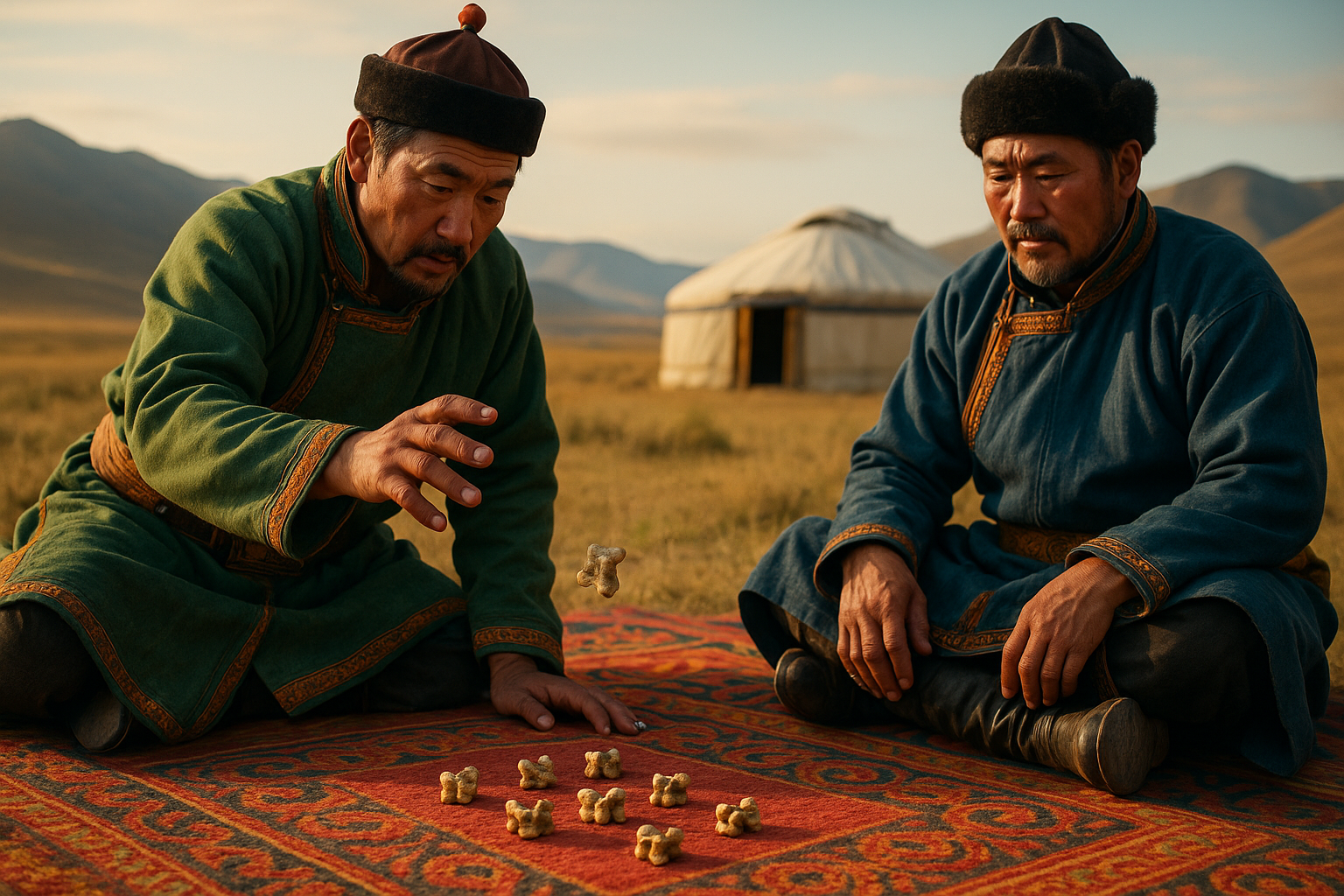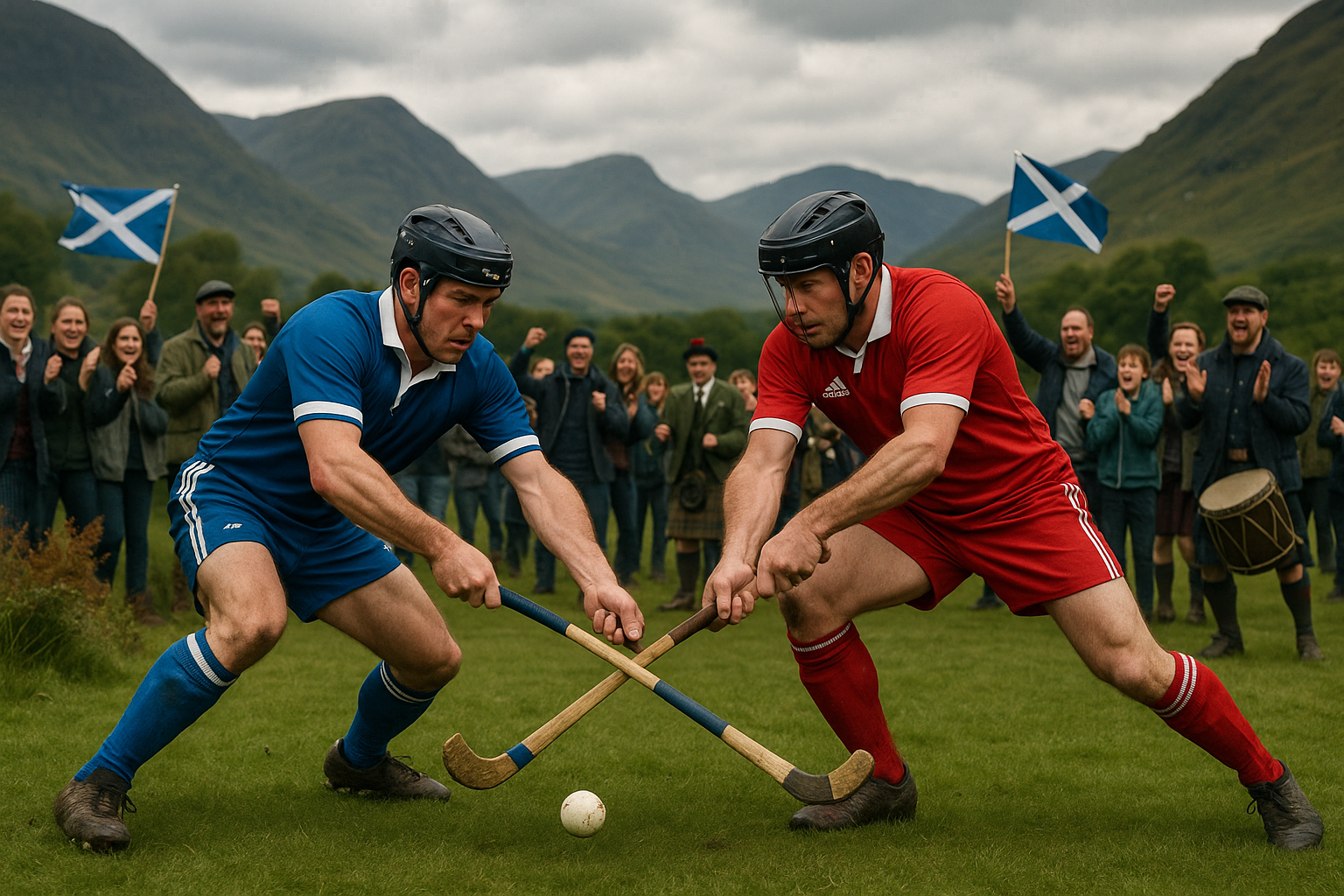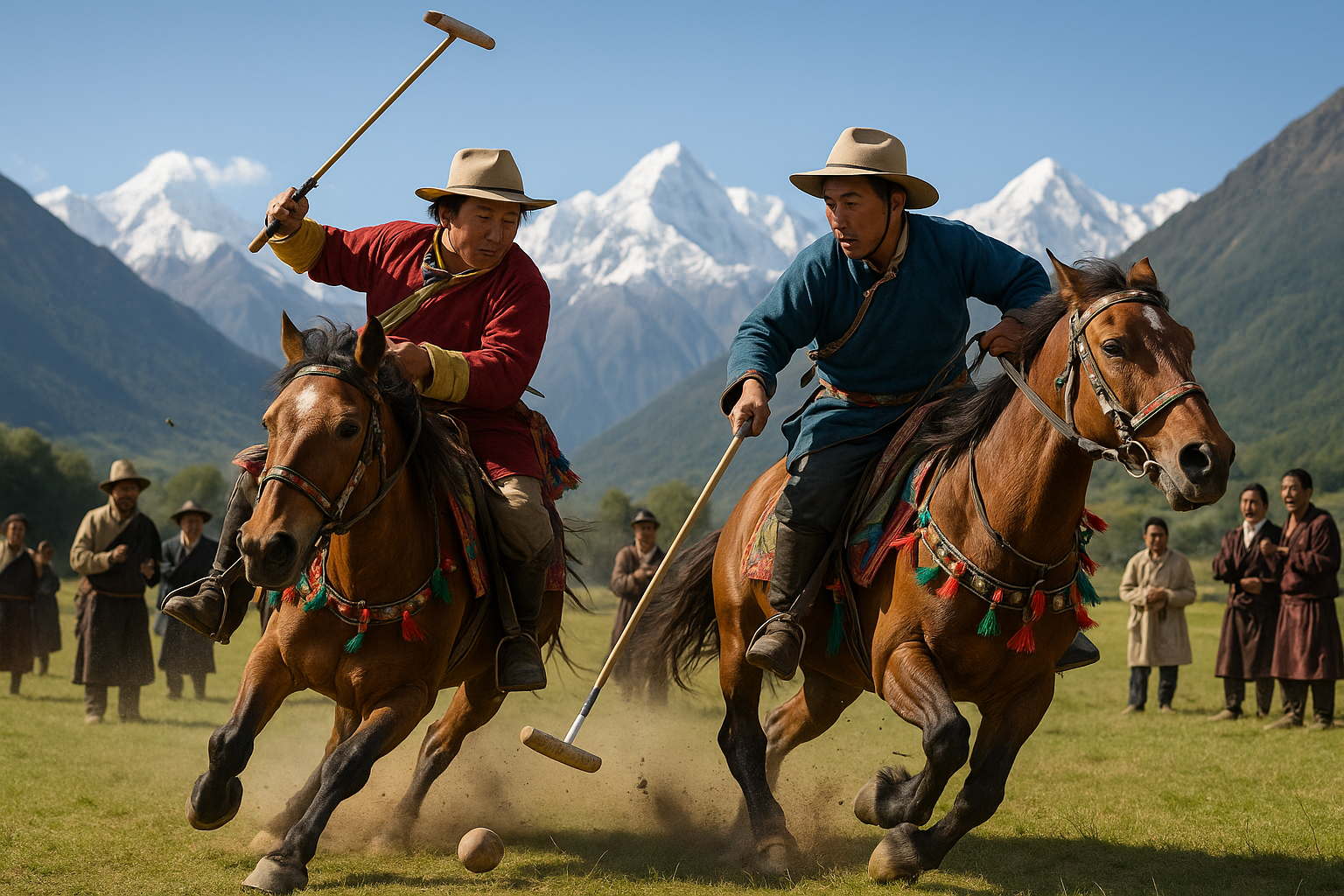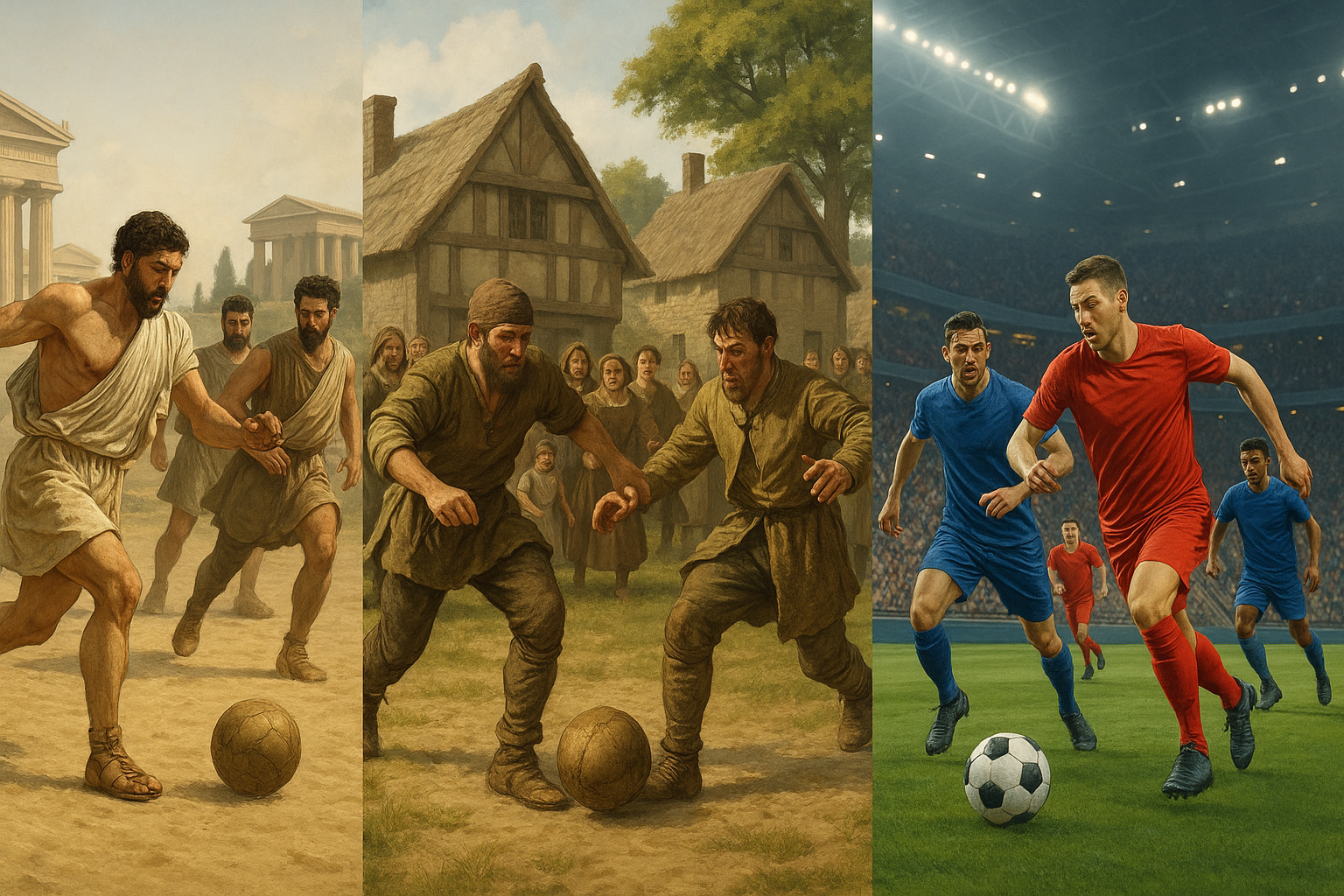Imagine a vast landscape where the wind carries ancient tales across rolling steppes. This is Mongolia, a land where tradition and culture intertwine seamlessly with daily life. At the heart of this heritage is a game as old as the nomadic tribes themselves: the traditional Mongolian knucklebone games. Known locally as “shagai,” these games are more than just a pastime; they are a testament to the Mongolian spirit of competition, skill, and strategy.
The knucklebone games are deeply rooted in Mongolian history and culture. They have been played for centuries, serving not only as entertainment but also as a way to hone skills essential for survival in the harsh Mongolian environment. The games involve the use of sheep ankle bones, each piece small yet significant, representing various animals depending on how they land. This simplicity belies the complexity and depth of the games, offering a challenging experience that requires both mental acuity and dexterity. 🎲
In today’s fast-paced digital world, where entertainment is often confined to screens, these traditional games offer a refreshing return to tactile and social interaction. They invite players to sit together, to share stories, and to engage in friendly competition, all while celebrating a cultural legacy that has been passed down through generations. This cultural journey is not just about mastering the games; it’s about understanding the values and traditions that shape a society.
The Origins and Cultural Significance
The knucklebone games are more than a simple diversion. They hold cultural significance, reflecting the Mongolian way of life and its close ties to nature. Historically, these games were used to develop skills necessary for hunting and herding, essential activities for the nomadic Mongolian people. The games teach patience, strategic thinking, and the ability to anticipate an opponent’s moves, qualities that are as valuable in the steppes as they are in modern life.
Each bone in the game has a specific meaning, often symbolizing animals crucial to the Mongolian pastoral lifestyle. The way these bones land can tell a story, predict fortunes, or even determine the outcome of a friendly competition. This rich symbolism adds layers of meaning to each game, transforming a simple roll of bones into a narrative steeped in cultural heritage. 🌍
A Modern Revival
In recent years, there has been a resurgence of interest in traditional Mongolian games, both within Mongolia and internationally. This revival is driven by a desire to preserve cultural identity in a rapidly globalizing world. As people seek to reconnect with their roots, the knucklebone games offer a tangible link to the past, a way to keep traditions alive while adapting them for contemporary audiences.
The games are now being taught in schools, showcased at cultural festivals, and even integrated into online platforms, reaching a new generation eager to explore their heritage. This modern renaissance ensures that the games continue to evolve, remaining relevant and engaging in a world where cultural traditions can easily be overshadowed by modern technology.
Exploring the Games
Our journey into the world of Mongolian knucklebone games will explore several popular variations, each with its own set of rules and strategies. From the fast-paced excitement of “ankle bone shooting” to the contemplative strategy of “horse race,” these games offer something for everyone. We will delve into the skills required for each game, the strategies that can lead to victory, and the cultural nuances that make them unique.
Throughout this article, we will provide insights into how these games are played, the communities that continue to celebrate them, and the ways in which they foster a spirit of camaraderie and competition. Whether you are a seasoned player or a curious newcomer, there is much to discover in this vibrant world of skill and strategy. 🏆
Join us as we embark on this cultural journey, unlocking the secrets of traditional Mongolian knucklebone games. Together, we will uncover how these ancient games continue to inspire, challenge, and bring people together, transcending borders and generations. Let the games begin!

Conclusion: Embrace the Challenge and Spirit of Traditional Mongolian Knucklebone Games
In this exploration of traditional Mongolian knucklebone games, we delved into a rich cultural heritage that extends beyond mere entertainment to encompass elements of skill, strategy, and social bonding. These games, which include shagai and various other engaging activities, offer a window into the historical lifestyle of the Mongolian nomads, highlighting their ingenuity and adaptability. 🎲
By engaging with these traditional games, players are not only honing their dexterity and strategic thinking but also connecting with a centuries-old tradition that underscores the importance of community and cultural identity. The games serve as a reminder of the value of preserving cultural practices and passing them on to future generations. This cultural journey enriches our understanding of the world, allowing us to appreciate the diversity and depth of human expression through play.
Furthermore, these games provide an excellent platform for teaching important life skills such as patience, foresight, and teamwork. Whether you are a novice or a seasoned player, the experience is equally rewarding, offering both challenge and enjoyment.
We encourage you to bring this ancient tradition into your modern life. Gather friends and family to experience the thrill and camaraderie of these games. By doing so, you not only keep the tradition alive but also cultivate a sense of connection and community. Share your experiences, discuss strategies, and let the games inspire lively interactions and storytelling.
Feel inspired to take this cultural journey further? Share your own experiences with traditional Mongolian knucklebone games in the comments below, or start a conversation with friends and family. Consider organizing a game night, where everyone can experience the excitement and cultural richness of these ancient games. 🌍
Thank you for joining us on this exploration of traditional Mongolian knucklebone games. We hope this journey has sparked your curiosity and inspired you to delve deeper into the fascinating world of cultural games. For more information on these games and their cultural significance, we recommend exploring resources available online and in cultural studies.
Let’s keep the conversation going. Share this article with others who might be interested in exploring this unique aspect of Mongolian culture, and let’s continue to celebrate and preserve our diverse cultural heritage together. 🙌
—
To expand this conclusion to meet your word count requirement, consider incorporating more detailed summaries of each game discussed, their historical contexts, and perhaps some testimonials or quotes from experts or players. Additionally, you could explore the impact of globalization on these traditional games and how they are being adapted in modern contexts.
Toni Santos is a cultural revivalist, play historian, and kinetic storyteller who travels time through the games we left behind. With a deep reverence for lost pastimes, Toni excavates forgotten sports, ancestral competitions, and community games that once defined how people moved, bonded, and thrived. From ancient Mesoamerican ball courts to medieval street games, nomadic strategy contests, and pre-colonial ritual play, Toni revives rulebooks that were never digitized—and champions a worldview where games weren’t just leisure, but meaning, skill, and survival. Combining ethnography, movement studies, game design, and oral tradition, he reconstructs games piece by piece, consulting archives, elders, and fragments of folklore. His mission is not only to replay the past, but to inspire new generations to rediscover joy in rules that challenge, unite, and reflect forgotten values. At the helm of Vizovex, Toni documents these rediscoveries with playable guides, interactive reconstructions, motion-capture reenactments, and interviews with guardians of ancient play. His platform speaks to: Experimental game designers and kinetic anthropologists Educators looking to decolonize sports curriculums Movement artists and cultural preservationists Playful minds seeking what we once valued in the games we played Whether it’s reimagining a Viking endurance sport, mapping traditional Māori games, or crafting tournaments for extinct athletic rites, Toni urges us to move like our ancestors once did—and play with purpose again.



